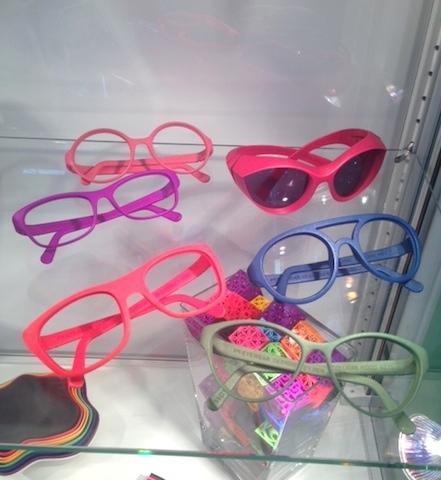The area of the TCT Show earlier this month, occupied by 3T RPD, was the source of much interest as it showcased several new materials for 3D printing that were being introduced by the company.
The creation of the not-so-lyrically-named PA 2241 FR is noteworthy because it adds flame retardant nylon to the portfolio of additive manufacturing materials. This will broaden the field of parts that can be produced using additive manufacturing techniques to areas that previously were unable to use the technology because of stringent safety requirements regarding the flame resistance of parts.
The flame retardant material is a polyamide 12 for use in laser sintering systems and works via a halogen-based flame retardant. What this means is that when the material is introduced to the conditions of a fire, it releases halogen, an inert gas, that then depletes the supply of oxygen to the flame and therefore extinguishes it. The fact that the powder is recyclable, meaning that the powder that remains loose and unsintered after part production can be mixed with fresh powder and used in the next sintering process, reduces the overall cost of utilizing the technology for part production. The CEO of 3T RPD, Ian Halliday explained the benefits they see arising from this new material:
“Increasingly, customers are capitalizing on additive manufacturing’s opportunities and seeing it as a technology for producing endues parts. Introducing fire safe materials to
our portfolio will enable a whole new range of engineers to reconsider the way they design and produce components. Our FR parts are already being used by the transport industry from both aerospace and rail applications. In addition, we anticipate strong demand for end use FR parts from other industries including the electrical and electronics sector, marine and motor vehicle manufacturers and building and construction.”
There has been a significant amount of concern over the environmental toxicity created when a halogen-based flame retardant is released. However, those concerns relate in great part to the contamination of the air inside of a structure where the halogen-based flame retardant has been introduced into materials such as carpeting and textiles. 3T RPD’s material has primarily been created for the production of strong, lightweight parts in engines and other transport related applications, and it has met standards for toxic gas generation (AITM 3.0005), however, it is something that will require further investigation if it becomes a material for use in building and construction.
In addition to the aluminum, chrome, steel, titanium, and nickel alloys that 3T RPD uses to produce parts, they introduced a new copper material for additive manufacturing.  While the flame resistant nylon is ready to be used, the copper is still under development. With that said, the piece created from the material and displayed at 3T’s booth at TCT certainly whet public appetite for the materials release. If you need something to play with to alleviate your impatience as you wait for the availability of 3T’s printable copper, their booth also gave space to a rainbow of full color solid prints.
While the flame resistant nylon is ready to be used, the copper is still under development. With that said, the piece created from the material and displayed at 3T’s booth at TCT certainly whet public appetite for the materials release. If you need something to play with to alleviate your impatience as you wait for the availability of 3T’s printable copper, their booth also gave space to a rainbow of full color solid prints.
The company’s products were certainly eye-catching, especially the array of colorful glasses frames that can help their customers look cool while they wait for the next exciting development. These glasses were more than just gimmicks, but were present in the booth to demonstrate a new finishing technique that gives them an extra smooth surface texture. The technique used to create this finely tuned texture is the result of a process so new that it hasn’t even been given a name yet.
3T RPD dedicates approximately 15% of their business to research and development, accounting for the high number of innovative contributions the company continues to make to the world of additive manufacturing. Marketing Manager at 3T RPD, Lynn Painter, expressed their outreach efforts as being greater than simply showing what they can do, but also issuing an invitation to developers to reimagine their designs or envision new possibilities in light of the offerings by 3t RPD. Let’s hear your thoughts on these new materials, and what they may mean for the industry, in the 3D RPD Materials forum thread on 3DPB.com.
Subscribe to Our Email Newsletter
Stay up-to-date on all the latest news from the 3D printing industry and receive information and offers from third party vendors.
You May Also Like
3D Printing Unpeeled: New Arkema Material for HP, Saddle and Macro MEMS
A new Arkema material for MJF is said to reduce costs per part by up to 25% and have an 85% reusability ratio. HP 3D HR PA 12 S has been...
3D Printing News Briefs, January 20, 2024: FDM, LPBF, Underwater 3D Printer, Racing, & More
We’re starting off with a process certification in today’s 3D Printing News Briefs, and then moving on to research about solute trapping, laser powder bed fusion, and then moving on...
3D Printing Webinar and Event Roundup: December 3, 2023
We’ve got plenty of events and webinars coming up for you this week! Quickparts is having a Manufacturing Roadshow, America Makes is holding a Member Town Hall, Stratafest makes two...
Formnext 2023 Day Three: Slam Dunk
I’m high—high on trade show. I’ve met numerous new faces and reconnected with old friends, creating an absolutely wonderful atmosphere. The excitement is palpable over several emerging developments. The high...

































